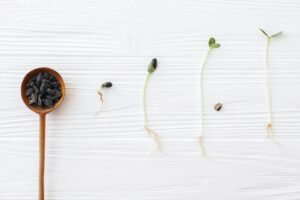Grass Court Characteristics
Court Speed: Fast
Bounce: Low
1. Serve Big
In tennis, the two most important shots are serve and return. If you cannot hold serve in a match you will struggle to win. Likewise, if you cannot return well against a strong server it will be tough to win. Serving big on grass comes with a huge advantage. Grass is the fastest court surface so hitting a powerful flat or slice serve is extremely effective as the ball will travel through the court very quickly and will stay low making it very difficult to return. If you would like to play effective grass court tennis, be sure to put quality time into practicing your serve.
2. Use Your Slice
Slice is often used in tennis as a defensive neutralising shot. However, on grass it can be a very effective attacking or aggressive shot. The key to a good slice is to hit through the ball, keeping the ball low over the net. On a grass court a slice (backspin) shot, like the serve, will travel through the court fast and will stay low forcing your opponent to hit up on the ball. Although hitting slice on the grass is effective against all players, it is particularly effective against tall opponents as it can be harder (physically) for them to repeatedly get down low to the ball.
3. Prepare Early (Racket & Body)
Early racket preparation is key to playing grass court tennis. The characteristics of the court surface being fast with a low bounce mean the ball comes through much faster than a clay court for example, giving you less time to prepare and hit your shot. One way to get your racket back earlier would be to play with a more compact swing, shortening your backswing so you gain more time to hit your shot. Early racket preparation also requires you to be able to read and react to the play. Moving your body and feet into position early will contribute towards you being able to get your racket back in good time to hit your shot.
4. Get To The Net
Getting to the net is a great tactic to use when playing grass court tennis. On grass, you will often see professional players serve and volley or follow a backhand slice approach shot into the net to look for a volley on the next ball. The low bounce and quick surface often force your opponent to hit up on the ball making a volley on your next shot a very effective strategy to use. A volley will take time away from your opponent on any court surface, however, on grass it is even more effective as the ball travels through the court much faster giving your opponent even less time. Lastly, moving into the net will put pressure on your opponent which can only be a good thing when looking to win a tennis match.
5. Train Your Lower Body
A low bounce means getting down to the ball. Staying low in the legs is key when playing grass court tennis. Having the muscular strength and endurance in your lower body is essential if you are serious about winning a match on the grass. In preparation for playing on the grass it is important to train your lower body so you can deal with the intensity needed in the legs to maintain a low body position.
6. Hug The Baseline
On grass, staying closer to the baseline has its advantages. If you can stay close to the baseline and take your shots early you will avoid getting caught out on low bouncing short balls, be able to take time away from your opponent and also be able to take advantage of any opportunity to get to the net. To benefit from the rewards of staying close to the baseline on grass be sure to prepare for this in advance of the grass court season.
I hope this post was of value to you. I’d love to hear your thoughts, please do send me a message on Instagram (simonjamescoaching).
Thank you for reading.
Simon James



